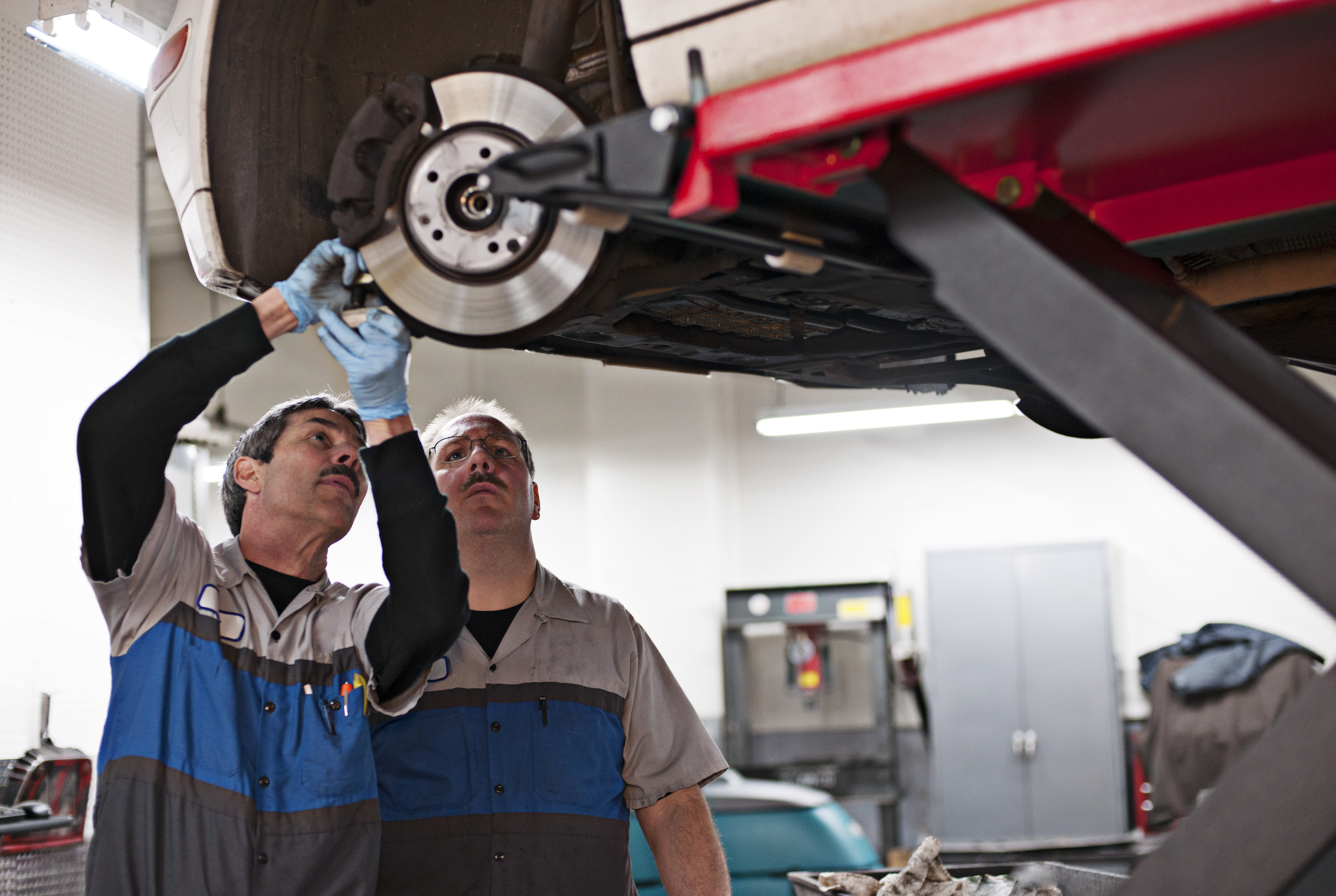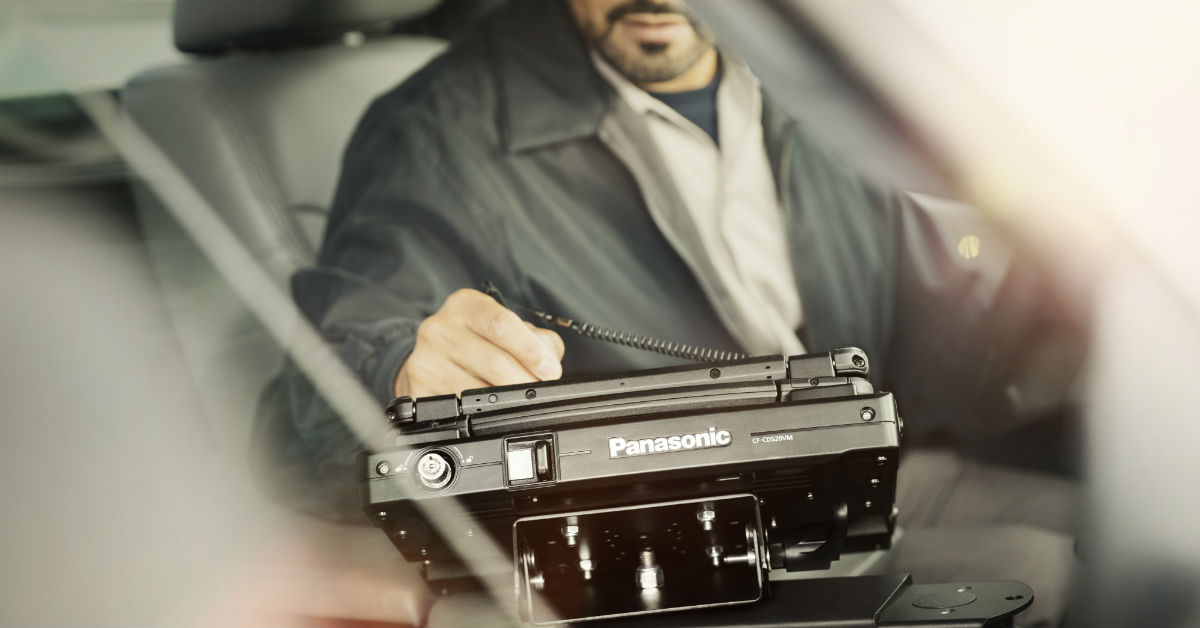For Modern Heavy Equipment Repair, Digital Diagnostics Are Essential
No one likes their vehicle to be out of service, whether it’s the van on the side of the road or an excavator on a construction site. Unexpected breakdowns can mean lost productivity, project delays, and substantial monetary losses. Mobile computers with diagnostic and repair tools can help avoid downtime and get vehicles back on the road quicker or heavy machinery functioning again on the construction site. Driving the growth of rugged devices is the increasing demand for computing capabilities on the go, even if it’s only untethering a heavy equipment repair technician from the diagnostic machine in the service bay.
In the case of heavy machine repair, often the mechanic must travel to the equipment instead of the other way around. And as technology advances, vehicle and heavy equipment repair operations increasingly require service technicians to interface with complex computer hardware.
This means that modern diagnostic capabilities must not only be mobile, but also digital.
Using rugged laptops for automotive and heavy machinery service diagnostics boosts technician productivity, lowers total cost of ownership, and enhances customer satisfaction. That’s why many service organizations are turning to rugged mobile devices to support technicians in service bays and field locations.
By deploying TOUGHBOOK Vehicle and Equipment Diagnostic Solutions, technicians can work on automotive and heavy machinery with the tools necessary to do the job efficiently and accurately.
Service Technicians Need Digital Diagnostics for Heavy Equipment Repairs
Whether you’re servicing consumer vehicles or heavy equipment, either is essentially a collection of digital devices all moving in the same direction.
The proliferation of advanced driver assistance systems (ADAS), automated manual transmissions (AMTs), electronic control units, and electric vehicles (EVs) add to the complexity of modern vehicles and the necessary skills to diagnose, maintain, and repair them. These features have improved vehicles, improving fuel economy, safety, and driver comfort. However, these advancements have also made digital diagnostics a must for automotive and heavy machinery service operations.
A typical modern car has 50 or more computers/electronic control units (ECUs), and EVs have even more. Those devices run 100 million lines of code — compared to the Apollo 11 spacecraft, which had 145,000 lines of code to make it to the moon and back.
While experienced techs can diagnose mechanical issues by noises and vibrations, digital black boxes require diagnostic tools to get the job done. Mobile devices connect with onboard vehicle and engine computers to read fault codes that determine the problem and advise on necessary repairs. This is especially critical for equipment that can’t be brought into a service bay and must be maintained or repaired at the job site.
Laptop software can connect with in-vehicle sensors to give technicians a real-time glimpse into vehicle health. Owners of both automotive and heavy equipment segments are keeping vehicles in service longer, which leads to increased demand for repairs.
Digital diagnostic tools are critical to service modern automotive and heavy machinery. With digital diagnostics, technicians can:
Make the right repair the first time
Experienced technicians possess valuable skills in problem identification, although occasional inaccuracies can occur. Digital vehicle diagnostics offer a swift and accurate means of pinpointing issues, eliminating the uncertainty often associated with traditional methods. With the integration of AI, technicians can leverage data more efficiently, empowering them to make informed decisions rapidly.
Connect with proactive service
Technicians connect with vehicles remotely to diagnose issues. In the case of heavy equipment repair, often the mechanic must travel to the equipment instead of the other way around. This means that diagnostic capabilities must not only be digital and comprehensive, but also mobile.
Depending on the outcome, repairs can be completed via sensors and IoT devices, returning vehicles to service faster. Vehicles can provide alerts for maintenance, such as filter and fluid changes based on time or mileage. These services can be scheduled rather than waiting for a breakdown.
Identify hidden problems in each heavy equipment repair
If a customer brings in a car or motorcycle after an accident, a bodywork estimate won’t identify electronics issues. When the bodywork is done, and the customer starts the car, dashboard warning lights could indicate the need for additional repairs, such as replacing damaged sensors.
With Panasonic TOUGHBOOK® solutions, automotive and heavy machinery service providers streamline automotive technician efficiency, cutting costs and shortening repair timelines in the service bay or out in the field.
Rugged Technology Lowers the Total Cost of Ownership
It’s tempting for service organizations to focus on the lower cost of consumer-grade or even bring-your-own-device options. However, considering the total cost ownership tells a different story.
When service organizations run the numbers, they realize that the upfront cost savings of buying non-rugged devices are forfeited over the product’s lifetime. The initial acquisition cost is only a fraction of the total cost of ownership.
Due to their longer life cycle, rugged devices’ enhanced durability contributes to lower total cost of ownership. According to the IDC report The Case for Deploying Rugged Devices, standard notebooks are replaced on average every 3.9 years, compared to 4.8 years for rugged notebooks.
Standard notebooks, tablets, and smartphones require more repairs over their service lifetime, which drives high incident costs plus lost productivity from users. The average cost of a notebook failure is nearly $3,000 per incident, including repair expenses and lost user productivity, as well as IT team time, according to the IDC report.
Over the average lifecycle of a rugged device, a rugged notebook saves $1,045 compared to a consumer-grade device.
What is a Rugged Device?
What makes a rugged device worth a premium? First, rugged devices are designed and built to withstand harsh environments. Many rugged devices also meet specific IP and MIL-STD standards for resistance to moisture, dust, vibration, shock, and temperature extremes. Devices are available in a variety of formats, including rugged laptops and 2-in-1 devices that can function as a rugged laptop or rugged tablet.
Rugged devices vs. consumer devices
Consumer-grade devices are not designed for harsh environments and professional-level use. Sturdy cases may provide some protection but aren’t sufficient for longevity. By definition, mobile devices are used on the move, so they are at much greater risk for damage during heavy equipment repair. Even one drop onto a concrete floor could put a consumer device out of service for good. Consumer devices frequently encounter visibility and readability challenges when used outdoors, particularly in sunny conditions. In extreme temperatures, they may even shut down completely, hindering productivity. However, rugged devices are designed to withstand glare from the sun and harsh weather conditions, eliminating these challenges and ensuring uninterrupted performance.
One luxury automaker learned the difference between rugged and consumer devices. For years, the company used consumer-grade devices at more than 300 dealers in North America. However, the consumer-grade devices continuously failed from the drops, dust, and liquid spills that are common in any busy service bay. It became clear that the dealership and company experienced additional expenses for replacement devices, as well as lowered service technician productivity.
After testing various options, the dealer technology group selected Panasonic TOUGHBOOK solutions to equip service bays, dealership lots and mobile techs for equipment diagnostics and maintenance.
The high-performing TOUGHBOOK devices improved the customer experience and helped the luxury car company use its service experience as a differentiator in a competitive industry.
Field Service Technicians Can Maximize Efficiency With Mobile Vehicle Diagnostics
As vehicles become progressively more complex, it’s critical for each service technician to be as productive as possible. Rugged mobile devices support the trend toward a 1:1 technician/device ratio rather than shared diagnostics tools, particularly for mobile techs.
A mobile tech can be deployed with all the equipment diagnostic tools necessary to support OEM capabilities. In a physical location, the 2:1 ratio may be more practical in some cases. The goal is to ensure field service technicians don’t have to wait for access to the proper tool to perform the diagnosis. Technicians appreciate having the tools to maintain their productivity level.
With the proper tools, service technicians are equipped to diagnose problems accurately the first time they connect with the vehicle. They can access parts and warranty information quickly and schedule follow-up appointments for parts replacements.
Typically, rugged notebooks use the OEM’s diagnostic software that connects with the in-vehicle system to identify problems or targets for proactive maintenance. Updates to the in-car navigation and entertainment systems can be delivered via the mobile device as well.
Also, in a factory authorized dealership, service organizations can transmit data collected from vehicles to the manufacturer’s cloud-based vehicle feedback database. At the corporate level, technicians review and analyze the data and proactively predict maintenance needs that are communicated to all dealerships. Service organizations can provide impressive white-glove service with proactive alerts about vehicles, reaching out to the owner for service rather than waiting for a call.
With video and audio interactivity, technicians in the field can access additional expertise to solve problems on the spot. Customers appreciate solving problems and returning equipment back to service with a single visit.
Downtime For Repairs is the Enemy of Efficiency
Construction, agriculture, oil and gas, mining, and other heavy machinery industries rely on vehicle uptime to ensure projects and production stay on track. In the era of fully analog vehicles, technicians drove to the job site, whether it was a rural field, a mine, or a construction site, to diagnose the equipment’s problem.
A lucky repair tech might have had the required parts in their trucks for the required heavy equipment repair. If not, the service technician had to drive back to the shop to retrieve the part or place an expedited parts order from the original equipment manufacturer or supplier. Meanwhile, the heavy equipment and the operator remained idle.
This kind of unscheduled downtime can result in lost productivity. An idled excavator waiting days for a part can interrupt a construction project with follow-on delays for dump trucks, bulldozers and other critical elements of the process.
On-site data collection and diagnostic software help minimize the impact of equipment failure and reduce the time it takes to perform a heavy equipment repair. Depending on the situation, a technician may be able to complete the repair on the first visit, reducing downtime and financial costs. The technician can access warranty information and an online catalog to order parts to get the equipment back to work.
Rugged Mobile Devices Take Equipment Diagnostics on the Road
Panasonic Connect’s antenna technology provides high connectivity rates even in remote settings where regular cell phones don’t usually have service. Field service technicians running remote equipment diagnostics have a reliable signal and the resources to repair the vehicle and get it back in action.
With access to diagnostic information and service manuals, the tech offers faster diagnosis and repair. There’s no need for multiple visits and trial-and-error part changes until the problem is solved. By monitoring the health of the vehicle and tracking hours or mileage, a field service technician can schedule downtime for routine maintenance so operators can plan ahead accordingly.
Customizable features like cameras and audio communication equip technicians to share information with off-site resources for faster, more accurate diagnosis and repair. Conversely, repair technicians in the field can engage remotely with their colleagues back at the service bay for advice or direction.
By using mobile devices, service technicians can document repair and maintenance activities in real-time, and capture products used like filters, fluids, and parts more accurately. The service history helps track when the next service is required or when to change out parts with a high failure rate during scheduled downtime.
With Panasonic Connect, service providers are equipped for an “operate from anywhere” work environment with diagnostic software, rugged mobile devices, value-added services, robust wireless connectivity, long battery life, hot-swappable battery options, and glove touchscreens.
Ultimately, service establishments that are able to return heavy equipment to work faster will quickly become the first call for time-sensitive operators.
Rugged Devices For the New Generation of Field Service Technicians
Service organizations that can offer work technology similar to consumer technology will be better equipped to recruit younger generations of workers who use mobile devices in their daily lives. This level of familiarity with the technology will help combat the skills shortage with easily accessible diagnostics and repair guidance.
The heavy equipment technician industry has a job opening rate three times higher than the national average. Industries that rely on heavy machinery like mining and construction may experience longer equipment downtimes due to the shortage of technicians. Rental equipment companies have a need for technicians because their equipment undergoes significant wear and tear as multiple organizations rent it for heavy use.
There are a significant number of unfilled job openings for automotive technicians, increasing the pressure on each technician to be more productive. Service operators can improve retention with cutting-edge tools that help technicians earn more by finishing jobs faster and reducing rework. For technicians paid a flat rate, this can be a compelling incentive.
Mobile devices can be used to present training videos, access repair manuals, and display schematics. Current employees can view these materials right in service bays or while working from remote locations, and new hires can use them to get up and running quickly in their positions.
Busy technicians can access training asynchronously, viewing information when it fits their schedules. Manufacturer updates, such as technical service bulletins (TSB) and recall information, are at their fingertips.
Choosing the Right Tech For Your Heavy Equipment Repair
As the number of microprocessors and electronic control units in a vehicle rises, there’s no doubt digital diagnostics are here to stay for automotive and heavy equipment repairs. Sure, consumer level devices may be able to do the job at some level. But service organizations looking for a lower total cost of ownership and better experience for employees and customers will invest in rugged TOUGHBOOK devices for vehicle and equipment diagnostics.
For a digital strategy for your service operations, assess your current and future needs and consider the benefits of a Panasonic TOUGHBOOK laptop for your organization:
- Operate with confidence in harsh environments
- Spend less with a longer device life cycle due to better durability
- Increase productivity with long battery life
- Eliminate paper forms with always-on connectivity
- Build custom devices with specific capabilities and peripherals
- Ensure security and oversight with robust mobile device management
TOUGHBOOK laptops and 2-in1 devices offer a variety of benefits for field service technicians, such as:
- TOUGHBOOK 33. Engineered for peak performance in the field, the TOUGHBOOK® 33 is the ultimate companion for field service technicians. Weighing just 3.4 lbs. (6.2 lbs with optional Premium Keyboard), it’s lightweight and portable, enabling technicians to tackle tasks with ease on the go. Featuring hot-swappable batteries, it guarantees uninterrupted service calls, while its versatile connectivity options keep technicians connected wherever they are.
- TOUGHBOOK 55. With the same long battery life as the TOUGHBOOK 40, the 55 also offers optimized connectivity in the field, advanced wireless antenna technology (more bars even in remote locations), and the choice of a 4G modem (speeds up to 2 Gbps) or 5G modem (speeds up to 5.5 Gbps) to help seamlessly connect to the best available network without disruption.
With Panasonic Connect’s Smart Essentials, service bay operators can easily manage all their devices, both within the shop and in the field. Smart Essentials identifies underutilized devices, for example, and any units that may not be operating as expected. This solution also monitors battery health and alerts managers or IT personnel when they need to order new batteries.
The New Frontier of Heavy Equipment Repair
As vehicles become ever more digital, it’s clear a bring-your-own-device strategy isn’t serving customers or technicians well. Those personal devices are subject to abuse, dirt, grease and other elements without a plan for management, repair, or replacement.
Technicians have come to rely on devices to access manufacturers’ technical information, perform vehicle diagnostics, or connect to service centers from remote locations. To serve these needs, service technicians want to use robust mobile technology that can diagnose and repair quickly, accurately, and effectively.
With a full portfolio of rugged laptops and support solutions, Panasonic Connect elevates operations for automotive and heavy equipment service operations. Learn more about how service providers repair right the first time, improve technician productivity, reduce costs, increase service bay throughput, and raise profitability.
![]()



